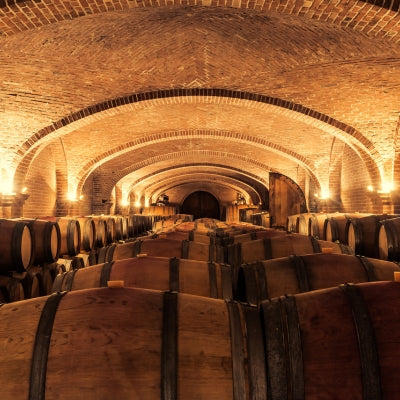
Oak and barrel maturation: new vs old barrels
In the third part of our series on oak and barrel maturation, Westgarth Wines wine specialist Maurizio Broggi discusses how the age and size of oak barrels greatly affect the style of the wine as well as the amount of time it spends in barrel.
Barrel age
The flavors and tannins imparted by oak to the wine during maturation are most pronounced during the 1st fill (new oak barrel). At each subsequent fill, the extraction of oak flavor decreases. 2nd fill barrels will likely impart about half of the oak flavors compared to a new barrel. By the 3rd to the 5th fill and beyond, barrels are usually considered neutral as the aromatics extracted from oak are minimal.
Some wine styles such as fine red Bordeaux or Napa Valley Cabernet Sauvignon are typically matured in at least a proportion of new oak, usually between 30 to 50% or more. Pétrus, Pomerol’s most famous estate, typically ages its wines in 50% new oak barrels with the rest aged in older barrels. Some top estates may use up to 80 and even 100% new oak barrels for their flagship wines.
When barrel age matters
New oak barrels are not for all wines, however, as intense oak aromatics and tannins may overwhelm certain wine styles, in particular many white wines and lighter red wines. Chardonnay is an example of white wine that greatly benefits from fermentation and maturation in new oak barrels as the vanilla and toasted notes along with the smooth texture provided by new oak marry perfectly with the grape variety.
In general, oak barrels are considered ‘old’ after the 3rd or 4th fill, where few to no aromatics are imparted. Older barrels are nonetheless important for many wine styles that require the gentle oxygenation provided by maturation in oak barrels. Additionally, the lack of oak flavors results in greater fruit expression. Indeed, a combination of new and older barrels is a typical maturation regime adopted by many winemakers seeking a balance between new oak flavors and fruit character.
Barrel size
The influence of new oak and oxygenation are inversely proportional to the size of the barrel due to the surface-to-volume ratio. Since changes in wine happen at the interface between wine and the walls of the vessel, the smaller the size of the barrel the greater the surface-to-volume ratio, thus the more pronounced the influence of oak is in terms of flavors imparted and oxygenation.
On the other hand, in larger oak vessels the speed of maturation is slower and the oak flavors extracted are fewer as there is a proportionally lower uptake of oxygen and fewer aromatics imparted due to the larger volume of wine.
Common sizes
Oak barrels come in a wide range of sizes and shapes. The most common oak vessels for barrel maturation are the small oak barrels such as the barrique Bordelaise (225L/59 gal) or the Burgundian pièce (228L/60 gal) adopted in many wine regions across the world. Oak casks or vats are larger format oak vessels that are typically used when oak flavors are not required. They can range from 300L/79 gal to even 1,000L/264 gal. Many classic wine regions and countries such as Alsace, Loire, Rhône Valley, Piedmont, Tuscany, Austria, and Germany traditionally adopt large oak casks for both red and white wines.
Time spent in barrels
The effect of new oak and oxygenation in barrels can be further adjusted by playing with a third parameter: time.
The time spent in barrels is typically a deliberate choice of the winemaker. Sometimes, a minimum aging period in oak is required by law such as in the wines of Rioja or Barolo. Tradition, grape quality, barrel size, barrel age, economics, and logistics are some of the many factors that influence how long the wine will spend in barrels, however, wine style and quality are most often the deciding factors.
White wines
Typically, white wines are matured in oak barrels for 3 to 6 months, often longer for premium oaked Chardonnay. Some top-quality Mosel Rieslings are aged for even up to 24 months in large 1,000L old oak casks known as fuders.
Red wines
Premium and high-end red wines may be matured for between 12 and 24 months and sometimes even longer for ‘reserve’ wines in traditional regions such as Barolo and Rioja. Giuseppe Mascarello’s Barolo Riserva Monprivato Ca D'Morissio is aged in large Slavonian oak casks for 40 months. Lopez de Heredia Viña Tondonia Rioja Gran Reserva is aged for as long as 10 years in American oak barrels.
Want to read more? Take a look at some of our other blogs:



